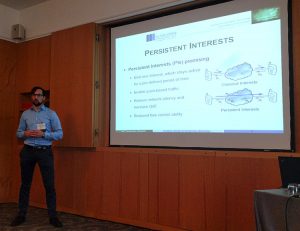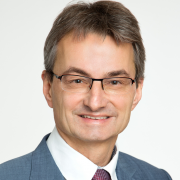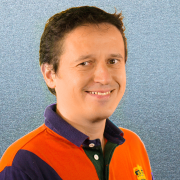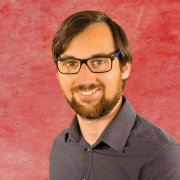Prof. Radu Prodan gives an invited presentation on “Multi-Objective Workflow Scheduling on Clouds” at the Workshop on Sustainable Ultrascale Computing Systems organised at the ISC High-Performance 2018 Conference in Frankfurt, Germany.
ITEC is delighted to announce the next speaker in our guest lecture series – it will be Prof. Jorge Barbosa from Universidade do Porto, Portugal.
The course will take place from November 8-10 and November 22-24, 2018. Read more
Real-time entertainment services deployed over the open, unmanaged Internet – streaming audio and video – account now for more than 70% of the Internet traffic and it is assumed that this number will reach 80% by 2021. Read more
Radu Prodan participates in the Inauguration Seminar Talks and presents “Massively Multiplayer Online Games on Large-scale Systems”.
ACM MMSys 2018: Multi-Codec DASH Dataset
Authors: Anatoliy Zabrovskiy (Petrozavodsk State University & Alpen-Adria-Universität Klagenfurt), Christian Feldmann (Bitmovin Inc.), and Christian Timmerer (Alpen-Adria-Universität Klagenfurt & Bitmovin Inc.)
Abstract: The number of bandwidth-hungry applications and services is constantly growing. HTTP adaptive streaming of audio-visual content accounts for the majority of today’s internet traffic. Although the internet bandwidth increases also constantly, audio-visual compression technology is inevitable and we are currently facing the challenge to be confronted with multiple video codecs. This paper proposes a multi-codec DASH dataset comprising AVC, HEVC, VP9, and AV1 in order to enable interoperability testing and streaming experiments for the efficient usage of these codecs under various conditions. We adopt state of the art encoding and packaging options and also provide basic quality metrics along with the DASH segments. Additionally, we briefly introduce a multi-codec DASH scheme and possible usage scenarios. Finally, we provide a preliminary evaluation of the encoding efficiency in the context of HTTP adaptive streaming services and applications.
Packet Video 2018: Investigation of YouTube regarding Content Provisioning for HTTP Adaptive Streaming
Authors: Armin Trattnig (Bitmovin Inc.), Christian Timmerer (Alpen-Adria-Universität Klagenfurt / Bitmovin Inc.), and Christopher Mueller (Bitmovin Inc.)
Abstract: About 300 hours of video are uploaded to YouTube every minute. The main technology to delivery YouTube content to various clients is HTTP adaptive streaming and the majority of today’s internet traffic comprises streaming audio and video. In this paper, we investigate content provisioning for HTTP adaptive streaming under predefined aspects representing content features and upload characteristics as well and apply it to YouTube. Additionally, we compare the YouTube’s content upload and processing functions with a commercially available video encoding service. The results reveal insights into YouTube’s content upload and processing functions and the methodology can be applied to similar services. All experiments conducted within the paper allow for reproducibility thanks to the usage of open source tools, publicly available datasets, and scripts used to conduct the experiments on virtual machines.
Packet Video 2018: Dynamic Adaptive Point Cloud Streaming
Authors: Mohammad Hosseini (University of Illinois at Urbana-Champaign (UIUC)) and Christian Timmerer (Alpen-Adria-Universität Klagenfurt, Bitmovin Inc.)
Abstract: High-quality point clouds have recently gained interest as an emerging form of representing immersive 3D graphics. Unfortunately, these 3D media are bulky and severely bandwidth intensive, which makes it difficult for streaming to resource-limited and mobile devices. This has called researchers to propose efficient and adaptive approaches for streaming of high-quality point clouds. In this paper, we run a pilot study towards dynamic adaptive point cloud streaming, and extend the concept of dynamic adaptive streaming over HTTP (DASH) towards DASH-PC, a dynamic adaptive bandwidth-efficient and view-aware point cloud streaming system. DASH-PC can tackle the huge bandwidth demands of dense point cloud streaming while at the same time can semantically link to human visual acuity to maintain high visual quality when needed. In order to describe the various quality representations, we propose multiple thinning approaches to spatially sub-sample point clouds in the 3D space, and design a DASH Media Presentation Description manifest specific for point cloud streaming. Our initial evaluations show that we can achieve significant bandwidth and performance improvement on dense point cloud streaming with minor negative quality impacts compared to the baseline scenario when no adaptations is applied.
A Network Traffic and Player Movement Model to Improve Networking for Competitive Online Games
Authors: Philipp Moll, Mathias Lux, Sebastian Theuermann, Hermann Hellwagner
Abstract: The popularity of computer games is enormously high and is still growing every year. Despite the popularity of gaming, the networking part of computer games relies on decade old technologies, which have never been intended to be used for low latency communication and are often the cause for overloaded and crashing game servers during peak hours. In order to improve the current state-of-the-art technologies, research in the networking field has to be conducted, but is challenging due to the low availability of up-to-date datasets and network traces. Modern networking solutions of computer games try to take the players’ activities as well as geographical closeness of different players in the virtual world into account, in order to achieve a high user satisfaction while keeping the network activity as low as possible. In this paper, we analyze the Battle Royale game mode of Fortnite as an example for a popular online game with demanding technical requirements with respect to networking. Based on the results of our analysis, we extrapolate player movement patterns as well as network traces, which can be used to study how to improve our current networking technology for online gaming, and to investigate possibilites to replace it by novel networking solutions, such as information-centric networking.
Workshop: NetGames 2018 (http://conferences.telecom-bretagne.eu/netgames18/)
Video Dataset of 101 Cataract Surgeries
Authors: Klaus Schoeffmann, Mario Taschwer, Stephanie Sarny, Bernd Münzer, Jürgen Primus, Doris Putzgruber
Abstract: Cataract surgery is one of the most frequently performed microscopic surgeries in the field of ophthalmology. The goal behind this kind of surgery is to replace the human eye lense with an artificial one, an intervention that is often required due to aging. The entire surgery is performed under microscopy, but co-mounted cameras allow to record and archive the procedure. Currently, the recorded videos are used in a postoperative manner for documentation and training. An additional benefit of recording cataract videos is that they enable video analytics (i.e., manual and/or automatic video content analysis) to investigate medically relevant research questions (e.g., the cause of complications). This, however, necessitates a medical multimedia information system trained and evaluated on existing data, which is currently not publicly available. In this work we provide a public video dataset of 101 cataract surgeries that were performed by four different surgeons over a period of 9 months. These surgeons are grouped into moderately experienced and highly experienced surgeons (assistant vs. senior physicians), providing the basis for experience-based video analytics. All videos have been annotated with quasi-standardized operation phases by a senior ophthalmic surgeon.
Links: Preprint of the Paper
Daniel, our former team-member, was one of the 2018 candidates for the Heinz Zemanek Dissertation Award. He presented his dissertation (“Towards Effective Multimedia Dissemination in Information-Centric Networks”, supervised by Prof. Hermann Hellwagner) on May 30, 2018. Unfortunately he did not receive the award it is a great distinction to be among the very best.
Towards Effective Multimedia Dissemination in Information-Centric Networks
Hearing zum Heinz Zemanek Preis 2018
Prof. Radu Prodan together with Prof. Vlado Stankovski from the University of Ljubljana published a special issue on “Storage for the Big Data Era” in the Journal of Grid Computing.
Abstract:
 Recent research in the field of Information-Centric Networking (ICN) shows the need for push-based data transfer, which is not supported in current pull-based ICN architectures, such as Named Data Networking (NDN). IoT deployments as well as emergency notifications and real-time multimedia communication are well suited to be realized using the ICN principles, but experience challenges in pull-based environments. Persistent Interests (PIs) are a promising approach to introduce pushlike traffic in Interest-based ICN architectures such as NDN. In this paper, we explore the characteristics of PIs and discuss advantages and disadvantages of using them. We provide an efficient solution for preventing so-called Data loops, which are introduced by giving up NDN’s one-request-per-packet principle. Furthermore, we investigate the performance of PIs compared to classical Interests in terms of the computational complexity of forwarding and discuss possible applications of PIs.
Recent research in the field of Information-Centric Networking (ICN) shows the need for push-based data transfer, which is not supported in current pull-based ICN architectures, such as Named Data Networking (NDN). IoT deployments as well as emergency notifications and real-time multimedia communication are well suited to be realized using the ICN principles, but experience challenges in pull-based environments. Persistent Interests (PIs) are a promising approach to introduce pushlike traffic in Interest-based ICN architectures such as NDN. In this paper, we explore the characteristics of PIs and discuss advantages and disadvantages of using them. We provide an efficient solution for preventing so-called Data loops, which are introduced by giving up NDN’s one-request-per-packet principle. Furthermore, we investigate the performance of PIs compared to classical Interests in terms of the computational complexity of forwarding and discuss possible applications of PIs.
AT: IEEE 87th Vehicular Technology Conference in Porto on 2018, June 3rd.
Links:VTC2018-Spring
Preprint of the Paper






